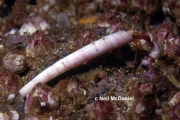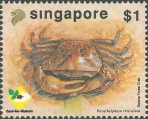Decanet source details
Hyžný, M.; Charbonnier, S.; Merle, D.; Lashari, R.A.; Bartolini, A.; Métais, G. (2016). New Early Cenozoic ghost shrimps (Decapoda, Axiidea, Callianassidae) from Pakistan and their palaeobiogeographic implications. Geodiversitas. 38(3): 341-353.
281227
10.5252/g2016n3a2 [view]
Hyžný, M.; Charbonnier, S.; Merle, D.; Lashari, R.A.; Bartolini, A.; Métais, G.
2016
New Early Cenozoic ghost shrimps (Decapoda, Axiidea, Callianassidae) from Pakistan and their palaeobiogeographic implications
Geodiversitas
38(3): 341-353
Publication
Available for editors 
A new set of Paleocene and Eocene decapod crustaceans is described from the Kirthar Range of Pakistan. Two new ghost shrimps (Crustacea, Decapoda, Callianassidae) are described: Neocallichirus khadroensis Hyžný & Charbonnier, n. sp. from the Paleocene (Danian, Khadro Formation) of Gawar Band, Ranikot District, and Neocallichirus lakhraensis Hyžný & Charbonnier, n. sp. from the Early Eocene (Ypresian, Lakhra Formation) of Rbod Nala, Jhirak District. Both new species exhibit chelipeds which are morphologically surprisingly close to extant Neocallichirus karumba (Poore & Griffin, 1979) from the Indo-West Pacific. A group of species sharing this same cheliped morphology is provisionally called the “karumba group” based on Neocallichirus karumba, best documented species. The “karumba group” encompasses seven fossil species: the two new Pakistani species, Neocallichirus tuberculatus (Lorenthey in Lorenthey & Beurlen, 1929) n. comb. from the Eocene of Hungary, Neocallichirus borensis Beschin, De Angeli, Checchi & Mietto, 2006 from the Eocene of Italy, Neocallichirus birmanicus (Noetling, 1901) n. comb. from the Miocene of Myanmar, Neocallichirus dijki (Martin, 1883) from the Miocene of Java and Philippines, and the subfossil Neocallichirus maximus (A. Milne-Edwards, 1870) from Thailand. Based upon the extant and fossil occurrences, it is difficult to reconstruct migration pattern of the “karumba group”. For now, it can be concluded, that at the genus level, a relative homogeneity of the ghost shrimps is observed between the Eastern and the Western Tethyan regions, as already suggested by Merle et al. (2014) for the assemblage of volutid gastropods from the Lakhra Formation.
Neocallichirus khadroensis Hyžný & Charbonnier in Hyžný, Charbonnier, Merle, Lashari, Bartolini & Métais, 2016 † accepted as Karumballichirus khardoensis (Hyžný & Charbonnier in Hyžný, Charbonnier, Merle, Lashari, Bartolini & Métais, 2016) † (original description)
Neocallichirus lakhraensis Hyžný & Charbonnier in Hyžný, Charbonnier, Merle, Lashari, Bartolini & Métais, 2016 † accepted as Karumballichirus lakhraensis (Hyžný & Charbonnier in Hyžný, Charbonnier, Merle, Lashari, Bartolini & Métais, 2016) † (original description)
Neocallichirus lakhraensis Hyžný & Charbonnier in Hyžný, Charbonnier, Merle, Lashari, Bartolini & Métais, 2016 † accepted as Karumballichirus lakhraensis (Hyžný & Charbonnier in Hyžný, Charbonnier, Merle, Lashari, Bartolini & Métais, 2016) † (original description)



